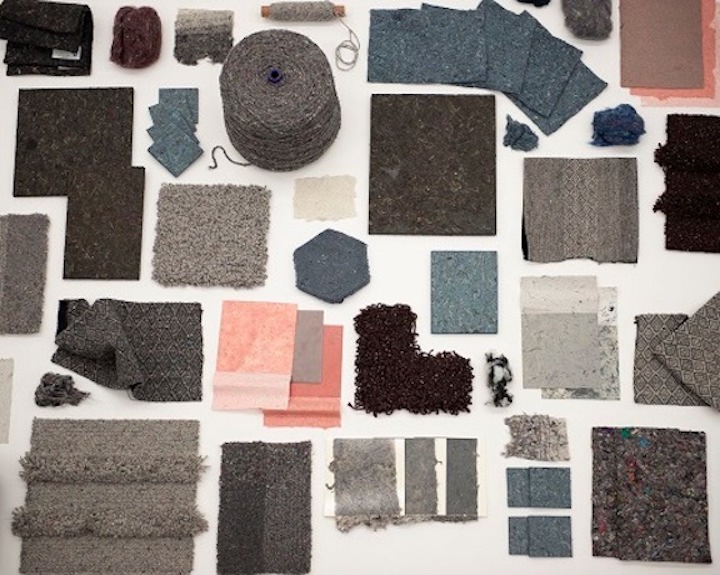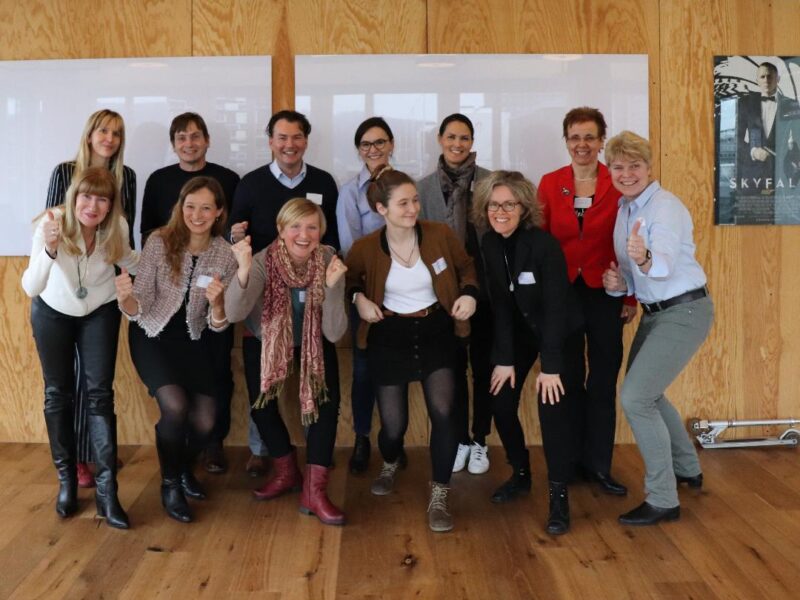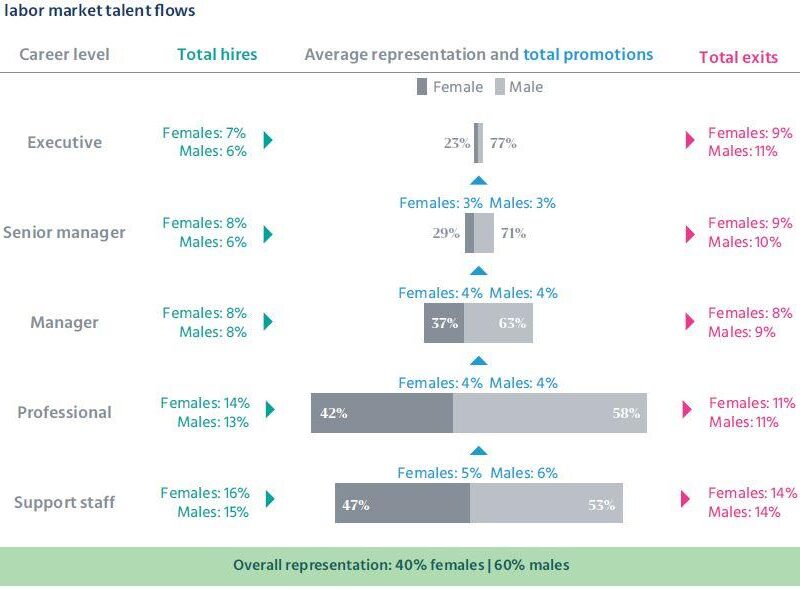TEXAID AND LUCERNE UNIVERSITY OF APPLIED SCIENCES AND ARTS RESEARCH BETTER WAYS OF RECYCLING COLLECTED CLOTHING
Various prototypes which were produced as part of the project (© Hochschule Luzern).
Each year, Texaid collects around 37,000 tons of old clothes in Switzerland and ensures that these are reused in an ecologically useful manner. 30 percent of the textiles collected are in too poor a condition to be worn again as second-hand clothing – the tendency is increasing, as the trend of cheap clothing produced cheaply persists. The question was: Can these textiles be recycled for high-quality uses? Researchers at Lucerne University of Applied Sciences and Arts and Texaid developed methods to spin the old clothing in Switzerland into a coarse yarn which is suitable for making carpets. Design and material researchers created prototypes from the short fibers and even from the dust which arises when fabrics are torn. These prototypes could be used for noise insulation, for example.
Processes analysed, applications optimised
Texaid is pursuing the ‘Close the Loop’ approach: They want to close cycles sustainably and holistically and find new and also high-quality uses for the raw materials from the old clothes. They started the ‘Texcycle’ project, a collaboration between Texaid, Lucerne University of Applied Sciences and Arts, and Coop, funded by Innosuisse.
Design-driven research presented the opportunity of approaching the highly complex problem of the sustainability of the textile cycles in a new way. To do this, the researches had to answer the following questions: Which textile materials are available according to today’s old clothes treatment sorting possibilities? How can they be reprocessed and in what way? How could a product range look with newly gained materials from used textiles?
Not just separating according to type of clothing, but also according to material
In a first stage, the researchers analysed the old clothes treatment processes and optimized them for new applications. ‘Up until now, the collected clothes were sorted according to type of clothing – e.g. men’s shirts, women’s trousers, coats’, explains Anna Pehrsson, Recycling Solutions Specialist at Texaid. However, for better reuse options, the material of the clothing plays a greater role; the clothes are rarely sorted following these criteria at present.
A cotton jumper which can no longer be worn is currently processed into cleaning cloths, although their material would be in demand for high-quality products. This is what the researchers want to change. ‘We have suggested the introduction of six material categories’, says Brigitt Egloff, Research Associate in the Art & Design department at Lucerne University of Applied Sciences and Arts. In this way, for example, products with a high proportion of cotton can be sorted separately. Because the purer the material, the easier it is to find reuse opportunities.
Carpet prototype
At the woollen mill Wollspinnerei Huttwil AG, materials are spun into threads. Here, it turned out that the best results were achieved if the recycled material from the old clothes was combined with the woollen waste from the spinning mill. In this way, 100%-recycled yarn can be produced and the coarse threads can be further processed to make carpets. The first prototypes look promising.
Recycled clothing made from insulating material
The design researchers from Art & Design and the material researchers from the Technology & Architecture department at Lucerne University of Applied Sciences and Arts also produced their first prototypes. They used the short fibers to manufacture fleece, a loose, unwoven combination of fibers, and developed various application options as insulating material. Above all, this can be used as noise insulation for internal rooms or facades. One difficulty here: ‘The technical requirements of construction products in architecture have to fulfill strict conditions and standards. The opposite applies when it comes to clothing or textile equipment’, says material researcher Susanne Triller, Research Associated in the Technology & Architecture department at Lucerne University of Applied Sciences and Arts. For the material to be allowed for use in construction, it must be proven that it is free from harmful substances and can be certified as not being a fire hazard.
In a follow-up project, new methods could now be found to spin fine yarn from used textiles – so fine that it can be used to manufacture new clothes again.
Additional information available at:
Short film:
You can find the short film (in German) about the ‘Texcycle’ project here.






